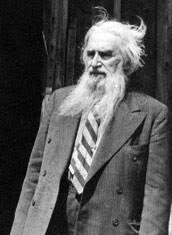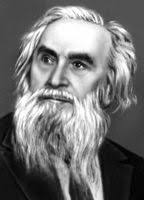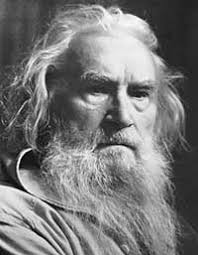
1874 - 1971
Sergey Konenkov

description
An outstanding Russian sculptor and graphic artist, who had earned the glory of “Russian Rodin” even before the revolution. Sergey Konenkov was a master of monumental compositions, portrait and plot genres, masterfully worked in wood, using folk carving techniques. As a portrait painter, he created a whole gallery of images of his contemporaries (F. Chaliapin, M. Gorky, S. Rachmaninov, A. Dovzhenko, K. Tsiolkovsky, V. Mayakovsky, S. Yesenin), compatriot writers (I. Turgenev, F. Dostoevsky, L. Tolstoy, Saltykov-Shchedrin). His outstanding monuments to A.S. Pushkin, V.I. Surikov and others are also known.
Sergey Timofeevich lived and worked in the United States of America for more than 20 years, mainly in New York. To order of the Princeton University Administration, in 1935, he created a bust of the great scientist Albert Einstein, with whom he was friends; later he created Einstein’s full-length sculpture.
During the war, the sculptor was an active member of the American Committee for Russian Assistance. In 1945, a ship was chartered for Konenkov and his works by order of Stalin.
The sculptor, who became a full member of the Academy of Arts in the pre-revolutionary 1916, after returning to his homeland, became an academician, People’s Artist of the USSR, Hero of Socialist Labor, and an honorary citizen of the city of Smolensk and laureate of state prizes.
The sculptures and drawings of the master are in the leading museums of Russia, in several museums and government agencies in the United States and other countries of the world. Works are constantly exhibited at the memorial Moscow House Museum “Creative Workshop of Konenkov”, and the Smolensk Museum of Sculpture opened at the insistence of the artist, who gave a large collection of works to his native city.
Key ideas:
– During his career, Konenkov combined his passion for folk wood carvings with folklore images, the work of Michelangelo with his expression, antiquity and modern art.
– While working on fairy-tale characters he knew from childhood, such as a woodsman or Stribog, Konenkov created large handicrafts, combined folk art techniques with professional wood processing methods. Sometimes he used such unusual and unconventional elements as inlaid wood with coloured stones.
– One of the claims of the academic jury to the work of Konenkov was “violation of proportions”. The master himself believed that the spiritual realism and emotionality of the sculptures was much more important than the exact adherence to anatomy and mathematical calculations.
– Inspired by the changes in society, the sculptor supported the plan of “monumental propaganda”, searched for new forms in bas-reliefs and monuments. However, monumental sculpture did not become the main focus of his work.
– Konenkov was one of the first among Russian sculptors who created a non-classical image of a female nude. It was innovative that these works (Firebird, Winged) were often made according to the traditions of Russian folk art.
– Less well-known, but no less perfect are drawings by Konenkov. The American period of his creativity, for example, includes magnificent graphics associated with reflection on the Bible and the theme of the Apocalypse. The artist depicted prophets and apostles, created sketches for cosmogony. Repeatedly sculpted the image of Christ using various materials.
1874
1892
1899
1910
1916
1919
1923
1928
1935
1945
1956
1965
1971
Sergey Konenkov was born into a peasant family
Started studying at the Moscow School of Painting, Sculpture and Architecture

Continued his studies at the workshop of V. A. Beklemishev

He became a member of the Union of Russian Artists

He was elected a full member of the Imperial Academy of Arts

He was appointed chairman of the Moscow Union of Sculptors and Artists

Lived in New York for 22 years

Got the Grand Prix in Paris for the sculpture "Prophet"

To order of Princeton University, he sculpted a bust of A. Einstein

He returned with his works to Moscow

He presented 184 sculptures at his solo exhibition

The 90th anniversary

The death of the artist

